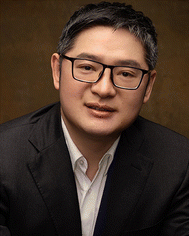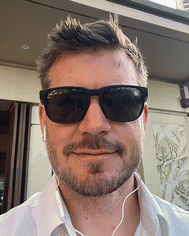Introduction to Soft Robotics
Anand Kumar
Mishra
 a,
Zhihong
Nie
a,
Zhihong
Nie
 *b,
Jamie
Paik
*b,
Jamie
Paik
 c and
Robert
Shepherd
c and
Robert
Shepherd
 *a
*a
aDepartment of Mechanical and Aerospace Engineering, Cornell University, 124 Hoy Road, Ithaca, NY 14850, USA. E-mail: rfs247@cornell.edu
bState Key Laboratory of Molecular Engineering of Polymers, Department of Macromolecular Science, Fudan University, Shanghai 200438, P. R. China. E-mail: znie@fudan.edu.cn
cReconfigurable Robotics Lab, Ecole polytechnique federale de Lausanne, MED 11326, Station 9 CH-1015 Lausanne, Switzerland
Soft Robotics blurs the lines of traditional robotics using materials science.
Soft Robotics is not entirely new. It is the next step in the progression of Smart Systems, Adaptive Matter, and Smart Materials communities focused on robotics applications. The key difference is the degree of complexity and level of systems integration. In a way, Soft Robotics is Smart Systems with an exclusive focus on using soft sensors and soft actuators; whereas Smart Systems was primarily focused on micro-electro-mechanical systems (MEMS), Soft Robotics focuses on mobility—the machine moves relative to the external environment.
With Soft Robotics, material properties now define how a robot functions. Unlike their rigid counterparts, soft robots rely on the careful selection and manipulation of materials to achieve movement, sensation, and interaction with the world. This introduction will explore the crucial role materials science plays in unlocking the potential of Soft Robotics, examining how material properties enable unique capabilities and highlighting the ongoing collaboration between materials scientists and roboticists that is pushing the boundaries of this exciting field.
Roboticists use Sensing, Acting and Responding (S–A–R) loops to cause machinery to automatically interact with the world. The hardware used for these loops is typically built for precision—linkages made stiff so the control software does not have to guess where its body is located, motor torques set to move these members with knowledge of their body's position based on encoders located in these motors, and vision the only additional sensing used to inform the controller what to do with its body. These systems are built based on environmental stability and unchanging body conditions. Furthermore, all components of the robot's S–A–R capabilities, including their power systems, are modules; distinct in function and hardware.
Our role as materials scientists is to improve the efficiency of these loops and produce more enduring and agile robots. Many of the innovations in Soft Robotics stem from the use of gradient mechanical–electromagnetic–chemical–thermal properties that more diffusely blend S–A–R modules; the ultimate result will likely be a system where the S, A, R, and power systems are blurred, indistinguishable and integral. This themed collection contains innovations that point in this direction.
We hope that the exciting innovations in this themed collection inform and excite the current and next generation of materials scientists to work towards closing the S–A–R loops with more diffuse, organic integration of hardware, as well as the development of control paradigms (software and hardware) that take advantage of these developments. In the future, robots will not be stiff because the control loops can’t understand their body's shape, as they work with the environment instead of solely against it. In the future, robots will bend – not break.
| This journal is © The Royal Society of Chemistry 2024 |




